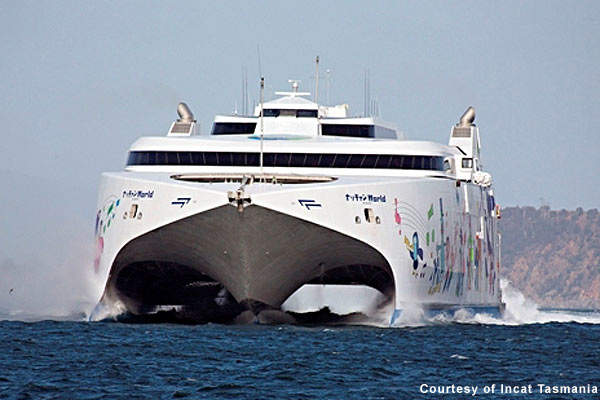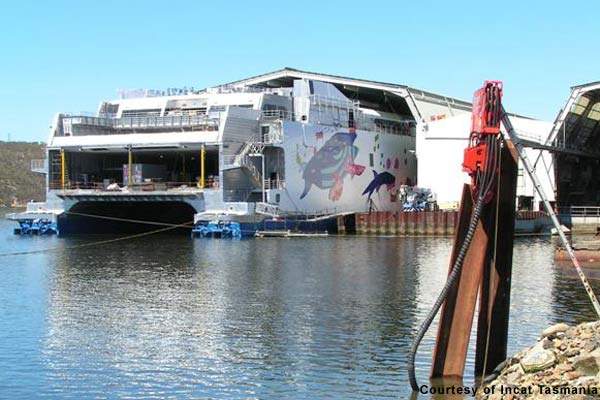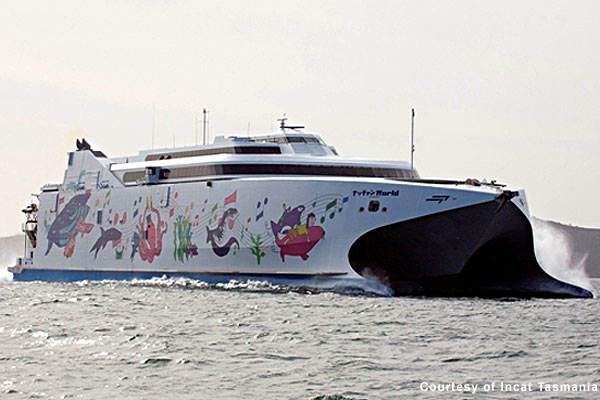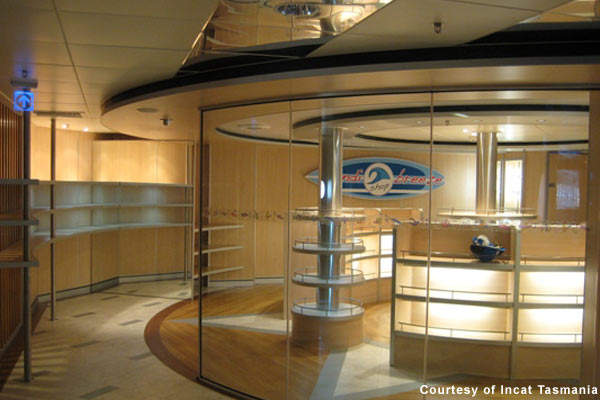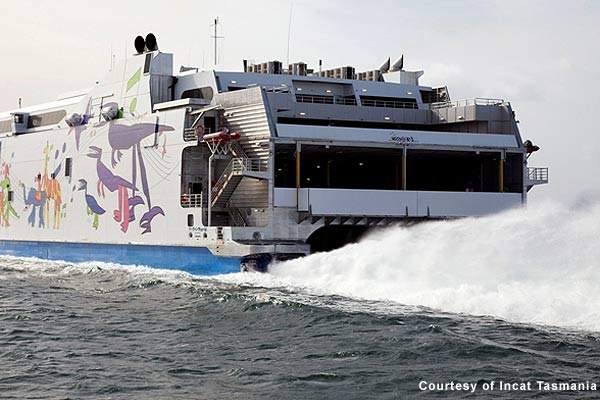The Natchan World catamaran car ferry was launched from the Incat Shipyard in Hobart, Tasmania, on 18 February 2008. The vessel is the second ferry constructed by Incat Tasmania for owner Toyo Shipping Line Co Ltd and operator Higashi Nihon Ferry.
The ship was delivered on 18 April 2008 following extensive sea trails in Prince of Wales Bay. Her sister ship, the Natchan Rera, was delivered in August 2007. The two ferries will now operate together on the car ferry service across the Tsugaru Strait between the islands of Honshu and Hokkaido. The catamaran design was chosen because the loaded draught of 3.83m will allow the vessel to operate in the shallow ports and waters encountered on the route.
TECHNICAL
The catamaran is 112.6m long with a P-P length of 93.8m, a moulded beam of 30.50m and deadweight of 1,450t. The ship can carry 800 passengers and 355 cars at full capacity. An alternative configuration allows 450 truck-lane metres with 193 cars. The catamaran is able to make 40kt in good weather.
The ships notation is 1A1 HSLC R1 Car Ferry B E0. In case of emergency, there are four Marine Evacuation Stations; two on the port side and two on the starboard. The two forward marine escape systems (MES) can serve up to 200 persons each with two at the aft allowing a total of 300 persons each. There are nine 100-person rafts fitted and two SOLAS inflatable dinghies with 30hp outboard motors for recovery operations.
DESIGN
The vessel was designed by Revolution Design Ltd and consists of two aluminium hulls connected by a bridge section. Each hull is subdivided into nine vented, watertight compartments supported by transverse bulkheads. There are two compartments in each of the hulls, which have been prepared as short-range fuel tanks, and one larger compartment as a long-range fuel tank. The ship can carry 900,000l of fuel oil at full capacity.
LUXURY CAR FERRY
The vessel is being marketed as a luxury high-speed catamaran with a number of features to keep passengers amused during the short crossing. The passenger space on board is located on Tiers 3 and 4. Tier 3 is the main passenger deck with three lounges, and can be accessed from the vehicle decks (Tiers 1 and 2) by forward and aft stairways, Kone escalators situated port and starboard and a TBV marine elevator.
The wood-clad entrance lounge leads to a circular cafe lounge with extensive seating and four large LCD screens. Just further aft of the entrance lounge are two business class lounges with laptop workstation areas. There is also a children’s lounge forward of the entrance lounge. On Tier 4, the executive-class lounges offer small booth-style compartments to lie down and relax instead of seats. The booths are all fitted with reading lights and LCD TV’s that are connected to Incat’s custom-developed public entertainment system. In addition, the vessel has ten Relax Robo massage chairs.
The executive lounge has leather upholstered Beurteaux Ocean Freeboard loungers and a wood-panelled bar. The ship’s distinctive livery was chosen through a competition run in Japan.
PROPULSION SYSTEMS
The Natchan World (home port Aomori in Japan) is powered by four 20-cylinder, 9MW engines (20RK280, MAN 20V 28/33D) supplied by MAN B&W Diesel Ltd. The ship’s power is provided by four main 360kW generator diesel engines (D2876) supplied by MAN Nutzfahrzeuge AG and GE Motoren-Nürnberg. The ferry is equipped with four of the largest propulsion thruster transmissions possible from ZF Marine GmbH (ZF 60000 NR2H) each of these has a maximum rated power of 12,387kW.
Engine power from the vessel is converted to thrust using a newly designed waterjet from Wärtsilä. This new LJX waterjet (LJX 1500 SRI) provides a 25% reduction in mounting flange diameter, an overall 10% weight reduction and 35% increase in cavitation margin. The waterjet is supplied with a 1,500mm diameter impeller.
There has also been a significant weight saving (70%) onboard by the use of composite Centa carbon-fibre shafts instead of steel shafts. The ship has also been equipped with a ‘Maritime Dynamics’ active ride control system to increase the comfort of the passengers. The system uses a number of features including active trim tabs aft and a fold-down T-foil located at the aft end of the centre bow, which is fitted with active fins.

